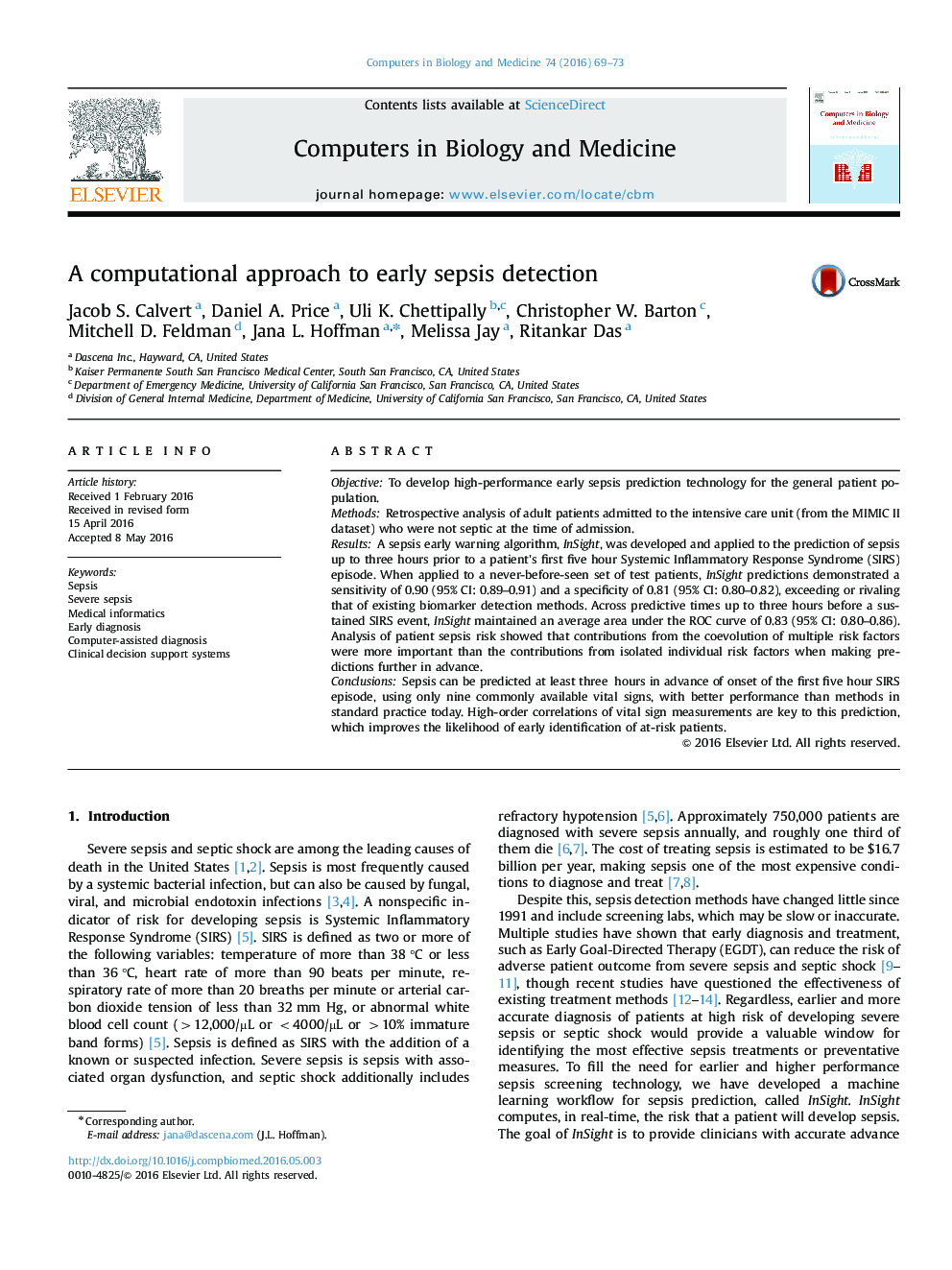| Article ID | Journal | Published Year | Pages | File Type |
|---|---|---|---|---|
| 504789 | Computers in Biology and Medicine | 2016 | 5 Pages |
ObjectiveTo develop high-performance early sepsis prediction technology for the general patient population.MethodsRetrospective analysis of adult patients admitted to the intensive care unit (from the MIMIC II dataset) who were not septic at the time of admission.ResultsA sepsis early warning algorithm, InSight, was developed and applied to the prediction of sepsis up to three hours prior to a patient's first five hour Systemic Inflammatory Response Syndrome (SIRS) episode. When applied to a never-before-seen set of test patients, InSight predictions demonstrated a sensitivity of 0.90 (95% CI: 0.89–0.91) and a specificity of 0.81 (95% CI: 0.80–0.82), exceeding or rivaling that of existing biomarker detection methods. Across predictive times up to three hours before a sustained SIRS event, InSight maintained an average area under the ROC curve of 0.83 (95% CI: 0.80–0.86). Analysis of patient sepsis risk showed that contributions from the coevolution of multiple risk factors were more important than the contributions from isolated individual risk factors when making predictions further in advance.ConclusionsSepsis can be predicted at least three hours in advance of onset of the first five hour SIRS episode, using only nine commonly available vital signs, with better performance than methods in standard practice today. High-order correlations of vital sign measurements are key to this prediction, which improves the likelihood of early identification of at-risk patients.
